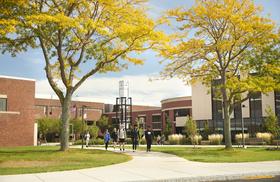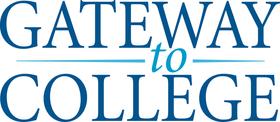Student Success Programs That Actually Work at Community Colleges
In 2025, more than ever, community colleges are embracing targeted student success programs to boost retention, completion, and equitable outcomes. For prospective students, parents, and educators, understanding which initiatives deliver results—and why—can guide meaningful decision-making. This article outlines key strategies, highlights real-world examples, and presents actionable recommendations that community colleges can use to support student success.
Why “student success” matters in the community college context
Community colleges serve a diverse population: first-generation students, adult learners, part-time enrollees, and those balancing work or family commitments. These realities mean that standard four-year pathways often do not apply. Student success programs at community colleges aim to address barriers such as unclear program pathways, remedial course requirements, limited advising, and fragmented support services.
A 2021 brief from the Community College Research Center (CCRC) describes the reform model “Guided Pathways” as a whole-college framework supporting students to explore, plan, and complete credentials aligned with good jobs or bachelor’s transfer. Similarly, a 2018 study found that students who entered a student success course in their first semester at a community college were more likely to earn college-level credits and persist into year two.ResearchGate Given these and other findings, it’s clear that student success programs are not optional extras—they are essential for community colleges striving to enhance outcomes for all students.
Key program types that deliver results
Here are four evidence-based types of student success interventions that community colleges are implementing in 2024-25, along with why they work.
1. Student success courses and seminars
Many community colleges offer a “student success” or “college success” course during the first term. These courses build academic stamina, help students develop time management and study strategies, and navigate campus resources.
Why they work: Research shows that early enrollment in such a course correlates with higher credit accumulation and persistence. For example, a study found students who took a student success course in their first semester were 6–10 percentage points more likely to persist into year two.
Core components:
Orientation to college culture and expectations
Study-skills modules, time-management workshops
Community-building among peers and faculty
Connection to advising and tutoring resources
2. Guided Pathways framework
The Guided Pathways model restructures how community colleges organize programs and student support so that students choose a “meta-major,” plan a clear program map, and complete within a reasonable time.Lumina Foundation
Why it works: It reduces confusion, eliminates unnecessary courses, and aligns programs with both transfer and workforce outcomes. In 2025, many institutions report improved completion rates and fewer excess credits thanks to this model.
Key elements:
Meta-major categorization (e.g., Health & Human Services, STEM, Business)
Program maps showing required courses, suggested sequence, co-curricular milestones
Proactive advising and progress monitoring
Integrated support services (academic, financial, career)
3. Comprehensive coaching, tutoring and wrap-around support
Student success often depends on more than academics. Colleges are increasingly offering integrated services including coaching, peer mentoring, tutoring, financial aid guidance, and personal support (housing, childcare, mental health).
Why it works: A 2022 randomized controlled trial by Urban Labs documented that a comprehensive support program at community colleges significantly improved students’ goal-setting, persistence, and credit-earning.
Typical components:
Dedicated success coach or advisor for each student
Embedded tutoring and academic workshops
Early alert systems for students at risk of stopping out
Personal-finance or basic-needs assistance
Peer mentoring for social connectedness
4. style="line-height:1.38;margin-top:12pt;margin-bottom:12pt;">Effective community colleges track program outcomes, identify what is working, and allocate resources accordingly. A 2023 article noted that community colleges are increasingly using ROI tools to estimate the revenue impact of improved persistence and completion.Community College Daily
Why it matters: Without tracking outcomes, institutions cannot reliably know which programs support student success and which are under-performing.
Best practices:
Set clear metrics (e.g., credits earned in year one, retention to year two, credential completion)
Use predictive analytics to identify students who may drop out
Align budgeting with student success outcomes
Regularly review and refine programs
Examples of successful implementation in 2025
Here are two concrete examples of how community colleges are applying student success programs effectively this year.
| Institution | Program | Key Outcome |
|---|---|---|
| Prince George’s Community College (PGCC) | STRIVE program: Coaching, tutoring, advising, up to 15 prior-learning credits via PLAN. | Students report improved momentum each semester and reduced time to degree. |
| City Colleges of Chicago (CCC) | Partnered with nonprofit One Million Degrees for comprehensive wrap-around support; RCT shows positive effects on persistence. | Enhanced support services reduced the drop-off rate in the first two years. |
These examples highlight how student success programs that are well-designed and executed can move the needle on outcomes in community college settings.
For parents, students and educators: what to look for
When considering a community college or evaluating student success programs, here are questions to guide your assessment:
Does the college offer a first-term student success course or seminar?
Is there a clear program map and advising structure (Guided Pathways) that avoids unnecessary credits?
Are there dedicated coaches or mentors, tutoring centers, and early-alert systems for students who may struggle?
Does the institution use data and metrics to track student progress and refine programs accordingly?
Is there support for non-academic needs such as financial aid, childcare, mental-health, and work-study balance?
For educators and administrators, implementing or refining student success programs means taking a systematic view: design early-intervention courses, integrate support services, map student pathways, and build analytics infrastructure.
Challenges and considerations in 2025
While the evidence is strong for student success programs, implementation is not without obstacles:
Resource constraints: Community colleges often face budget pressures and may struggle to sustain programs long-term.
Scalability: What works for a pilot cohort may not scale easily to all students without additional staffing and infrastructure.
Equity gaps: Student success programs must explicitly address equity to avoid benefiting only already-advantaged students.
Data capacity: Many colleges still lack mature systems for tracking outcomes, analyzing interventions, and making informed decisions.
Student engagement: Program effectiveness depends on early and meaningful student participation; simply offering services is not enough.
Despite these challenges, colleges that commit to evidence-based student success strategies and continuous improvement are seeing measurable gains in persistence, completion, and student confidence.
Key take-aways
Effective student success programs at community colleges are not optional extras; they are central to improving retention and completion.
The most successful models combine early-term success courses, guided-pathways frameworks, coaching/tutoring wrap-around support, and rigorous data tracking.
For 2025, the trend is shifting toward holistic support (academic + non-academic), ROI-based analysis, and equity-focused design.
Parents and students should evaluate institutions on the structure and outcomes of their student success initiatives when selecting a community college.
Educators and administrators should focus on embedding student success as a core institutional function, continuously refine programming based on data, and ensure all students have access to high-quality support.
By grounding student success programs in research and evidence, community colleges can meaningfully improve outcomes for diverse learners. For prospective students, parents, and educators alike, understanding what makes these programs work—and what questions to ask—can help ensure that the promise of community college leads to real achievement.















